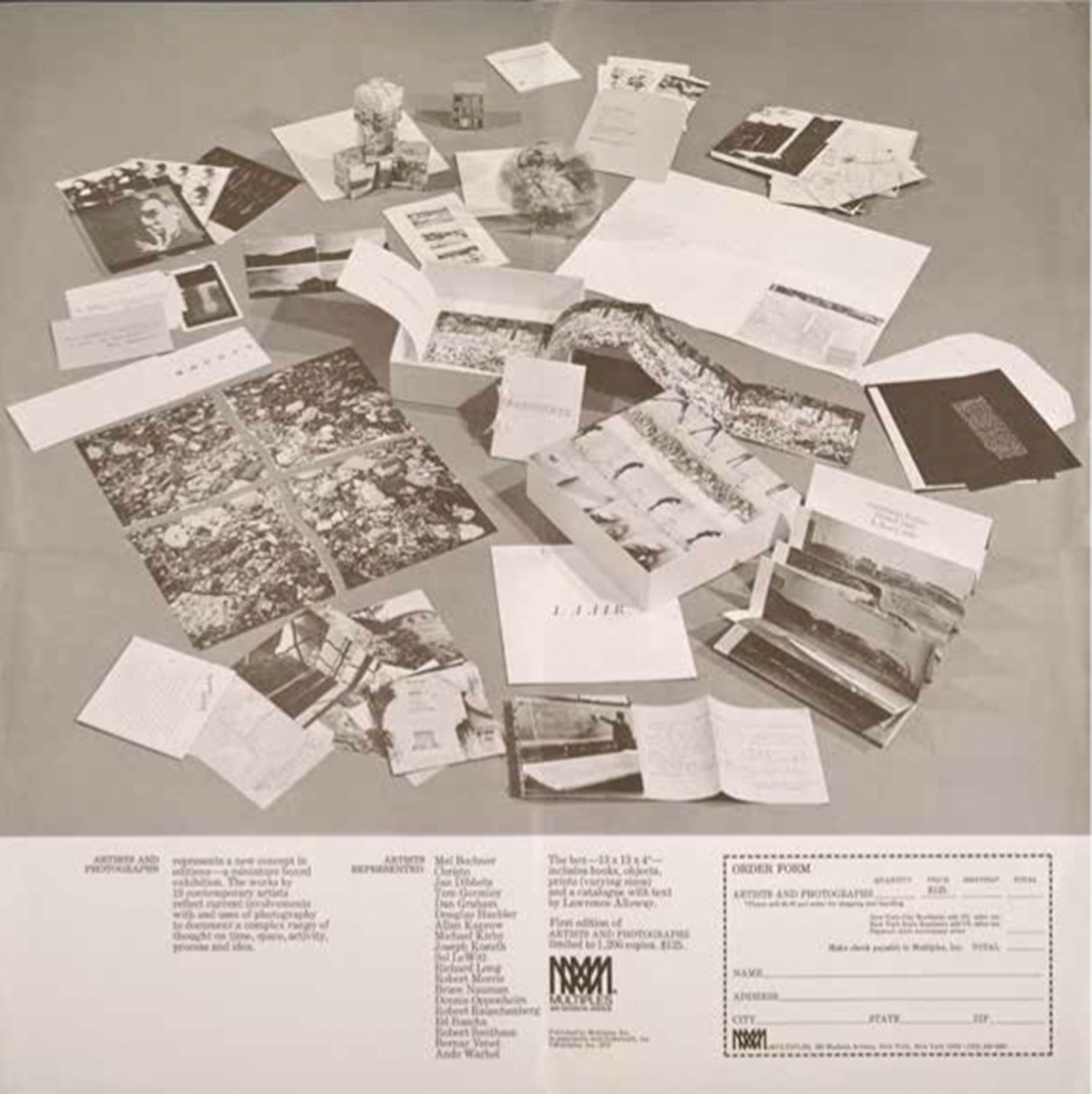Abendvortrag
Beatrice von Bismarck: The Art World as Multiple: Lawrence Alloway and Artists and Photographs (1970)

While the British art critic Lawrence Alloway, a central figure in the development of British Pop Art, is predominately known for his critical writings he has in a variety of ways also been engaged in curatorial practices. His involvement in the multiple box Artists and Photographs (1970) marks a moment of historic development both within Alloway's professional career as well as in that of the art field. Its concept, content and structure testify to Alloway's art critical and art historical value system not only with regards to the nature and potential of the photographic medium, but beyond that also in relation to his wider sociologically funded aesthetics. Furthermore in a wider perspectival frame the box may also be understood as epitomizing the structural changes which took place within the art field around 1970.
Beatrice von Bismarck (Leipzig, Berlin) professor for art history, visual culture and cultures of the curatorial at the Academy of Visual Arts Leipzig. From 1989 - 1993 she worked as a curator of the department of 20th Century art Städelschen Kunstinstitut, Frankfurt/Main and until 1999 she taught at Lüneburg University. There she was co-founder and -director of the project-space „Kunstraum der Universität Lüneburg“. In Leipzig she is also co-founder of the project-space "/D/O/C/K-Projektbereich" and initiator of the M.A. Program "Cultures of the Curatorial" which started in autumn 2009. Current research areas: Modes of cultural production connecting theory and practice; curatorial practice; effects of neo-liberalism and globalization on the cultural field; postmodern concepts of the "artist".
Publications include: - Games Fights Collaborations. Art and Cultural Studies in the 90s, Ostfildern-Ruit 1996. (ed. with Diethelm Stoller, Ulf Wuggenig); - Christian Philipp Müller. Branding the Campus. Art, Architecture, Design, Identity Politics, Düsseldorf 2001. (ed. with Diethelm Stoller, Astrid Wege, Ulf Wuggenig); -Interarchive. Archival Practices and Sites in the Contemporary Art Field, Cologne 2002. (ed. with Hans-Peter Feldmann, Hans Ulrich Obrist, Diethelm Stoller, Ulf Wuggenig); - Grenzbespielungen. Visuelle Politik in der Übergangszone (Performing the Border. Visual Politics in Zones of Transgression), (ed.), Cologne 2005; - Globalisierung/Hierarchisierung. Kulturelle Dominanzen in Kunst und Kunstgeschichte (Globalization/ Hierarchization. Cultural Dominances in Art and Art History), Marburg 2005 (ed. with Irene Below); - beyond education. Kunst, Ausbildung, Arbeit und Ökonomie, (beyond education. Art, Education, Work and Economy), Frankfurt a. M. 2005 (ed. with Alexander Koch); - Nach Bourdieu: Visualität, Kunst, Politik (After Bourdieu. Visuality, Art, Politics), Vienna 2008 (ed. with Therese Kaufmann, Ulf Wuggenig); - Auftritt als Künstler (Performance as Artist), Cologne 2010; - Cultures of the Curatorial (ed. With Jörn Schaffaf and Thomas Weski), Berlin 2012; - Timing - On the Temporal Dimension of Exhibiting (ed. with Rike Frank, Benjamin Meyer-Krahmer, Jörn Schafaff, and Thomas Weski), Berlin 2014.
03. März 2015, 18:00 Uhr
Kunsthistorisches Institut in Florenz
Max-Planck-Institut
Palazzo Grifoni Budini Gattai
Via dei Servi 51
50122 Firenze
Hinweis
Diese Veranstaltung wird durch Fotografien und/oder Videoaufnahmen dokumentiert. Falls es nicht Ihre Zustimmung findet, dass das Kunsthistorische Institut in Florenz Aufnahmen, auf denen Sie erkennbar abgebildet sein könnten, für die Veranstaltungsdokumentation und Öffentlichkeitsarbeit (z.B. Social Media) verwendet, bitten wir um eine entsprechende Rückmeldung.


